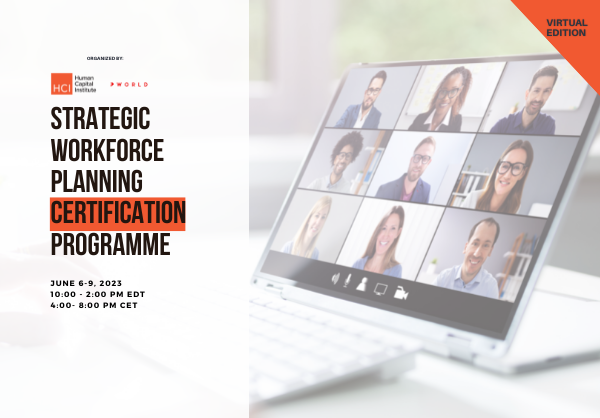Talent Management Context
Talent management aligned with strategy
Talent management by the numbers
Agenda Introduction
Strategic Workforce Planning: Background and Context
Workforce Planning Evolution
Operational versus Strategic Workforce Planning
HCI’s Perspective on Strategic Workforce Planning
The HCI Strategic Workforce Planning Model
Workforce Planning in Action
The Hallmarks of Successful SWP Efforts
Strategic Workforce Planning as Risk Mitigation
Case Studies:
• VF Corporation
• NASA
• NCR
Self Assessment of workforce planning maturity
Business Strategy
Strategy first
Competitive differentiation map
Examples of strategic statements
Strategic alignment
Strategy references
Differentiated Segments
Four stages of workforce differentiation
Segmenting roles
A spectrum of roles
Examples of critical roles
Competencies for critical roles
Activity: Case Study
Environmental Scan
Quantitative and qualitative information
Environmental scan quadrants
Internal supply: Profile and trend data
External supply
Internal demand
External demand
Risk assignment to environmental factors
Activity: Case Study
The Data Requirements of Strategic Workforce Planning
Marketing segmentation
Current state workforce supply groups
Workforce data
Activity: Conducting Current State Analysis
Current State Analysis
The data requirements of Strategic Workforce Planning
Using and evaluating talent information
Case Study examples:
• GE
• Proctor & Gamble
• Husqvarna
Day 1 Summary
Summary
Tomorrow’s agenda
Day 2 Introduction
Recap day 1
Preview day 2
Activity: Preparation activity
Futuring
Possible futures
Futuring techniques
Limits of forecasting
The no-change future state
Scenario planning
Examples of a scenario matrix
Scenario modeling in practice
The targeted future state
Gap Analysis
Examples of gap dimensions
Gaining consensus on critical gaps
The SWP toolkit gap template
Action Planning
Solutions to close gaps
6 Bs for skill acquisition and development
Work design
Rewards and recognition
Development
Acquisition
Manage and lead
Retention
Activity: Case Study
Telling Stories with Data and Enlisting Support
The Elements of Compelling Stories
Influencing skills and driving change
Infographics and other visualization techniques
Case Study examples:
• McGraw Hill Federal Credit Union
• Grant Thornton
• Conagra
Bringing Strategic Workforce Planning to Life and Practice
Compelling cases for workforce planning
The competencies of successful workforce planners
Roles and responsibilities of the SWP project team
The SWP workshop session
Walkthrough assessment and getting started toolkit
Workforce Planning in a State of Perpetual Change
The ongoing Environmental Scan
Building a data dictionary: the importance of a common vernacular
The continuous process of review and (re)alignment
Designing for flexibility and innovation
17:00
Conclusion
Summary
Key learnings
Next steps


